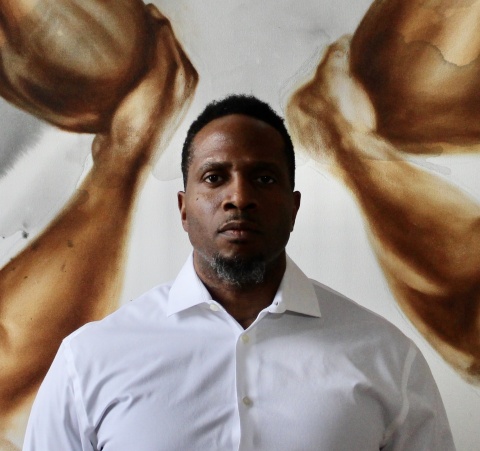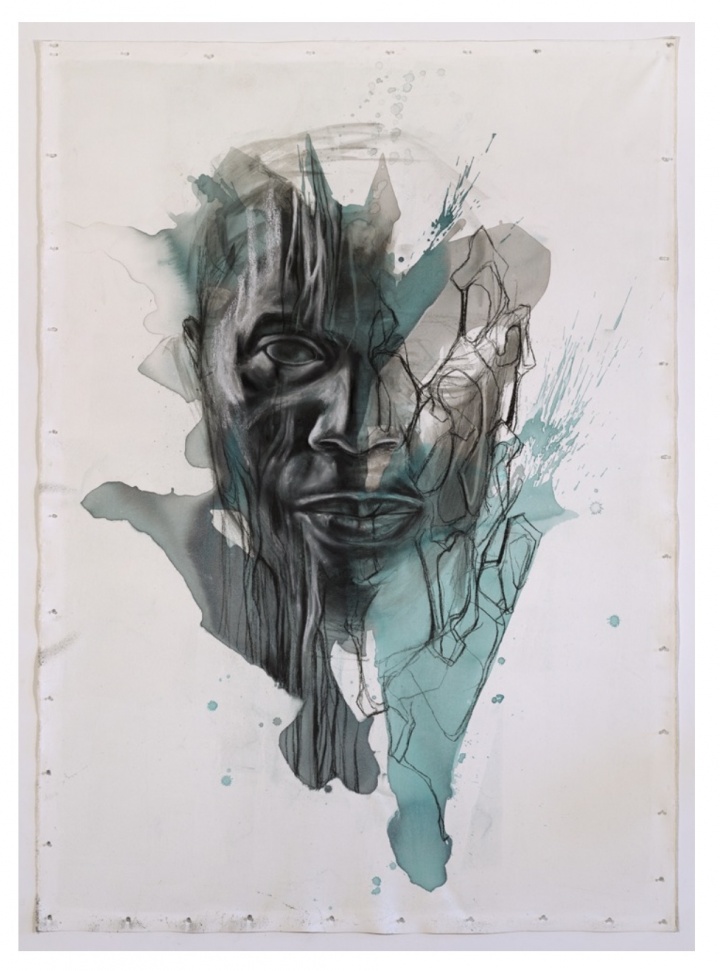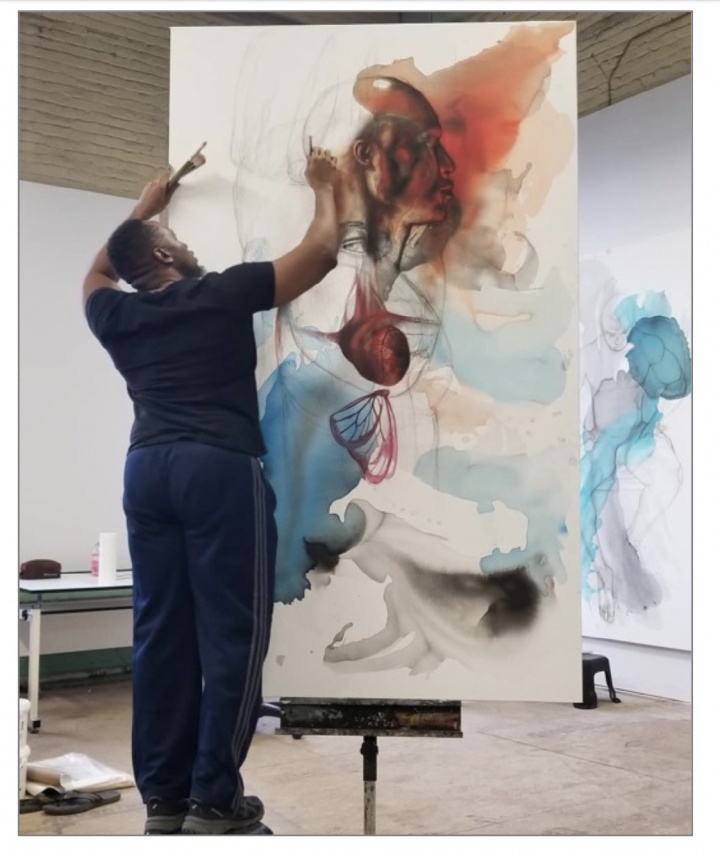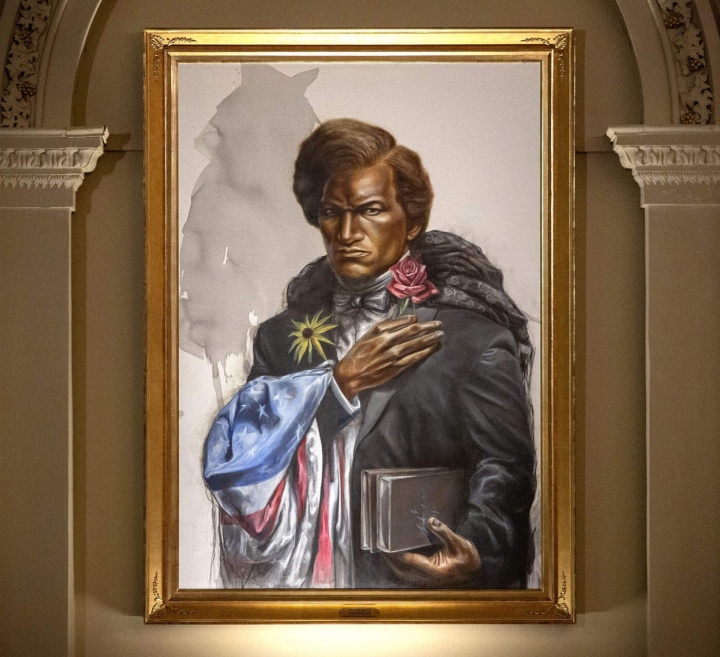Columbia College | Columbia University in the City of New York
Imo Imeh ’02’s Art Tells Big Stories

Imo Imeh ’02
After being weeded out of pre-med studies, Imeh began preparing an application to the Law School. With no experience whatsoever in law, he thought a good first step would be to go into the building, breathe deeply and try to get a feel for the space.
“I went in, and all I could think was: ‘So many empty white walls! Could no one throw up a painting in here?!’ he recalls with a laugh. “I knew then I wasn’t going to be applying to law school, that I was going to have to tell my very Nigerian parents that I was going to be an artist.”

“The Memory Tower” (2023), from Bioformations, a series in Imeh’s Monument to Our Skies.
Imeh, who earned a Ph.D. from Yale in 2009 and is a professor of art and art history at Westfield State University, says that the first part of Monuments to Our Skies, called Bioformations, came about shortly after the murder of George Floyd in 2020. He was contacted by the editor of the journal Biological Psychiatry, who was reaching out to artists of color to create special covers during that period of national protest.
“They wanted to do something more than change their Instagram page to a black square,” Imeh says. “They wanted to use the journal covers to offer representation that they felt was missing from their discipline.” Imeh ultimately created six covers that visualize the realities of Black historical trauma while also celebrating wellness, longevity and the capacity to nurture, heal and thrive. In 2024, he was invited to speak about the collaborative project at the annual meeting of the Society of Biological Psychiatry.
“It was a science conference, but they gave me a chance to speak about the process of creating those works and what they meant to me,” Imeh says. “You could hear a pin drop in that room.”

Imeh with “Epilogue” (2019), from Divinity.
Imeh was an active visual artist on campus; he created the University’s Black History calendars from 1999 to 2002 and was the recipient of the inaugural Senior Thesis Prize in Art History and Archaeology. But he credits his sociology courses with Sudhir Venkatesh and Mignon Moore ’92 for helping to bring artistic vision to life.
“I knew I was interested in using Black bodies and African diasporic narratives to tell big stories and address big topics, but I didn’t have the language,” Imeh says. “These people helped craft a vocabulary for me around the things that I would wind up painting. I took that academic training to Yale, and I’ve brought it into my practice now.”

The portrait of Frederick Douglass in Worcester’s Mechanics Hall.
Robin Lubbock: WBUR
In Worcester, Imeh’s painting hangs alongside portraits of former Presidents that he calls “very old, very legit.” And though he shares that he has struggled with imposter syndrome, he eventually learned that he himself is legit. “There’s a verse in the Bible that was spoken over me a lot at church: ‘a man’s gifts will make room for him’ — like, ‘space will be created for you by the thing you’re doing,’” Imeh says. “And now that’s something I tell my students all the time. It’s an amazing thing that your art can make room for you.”
More “Online Spotlights”
- ‹
- 2 of 2

